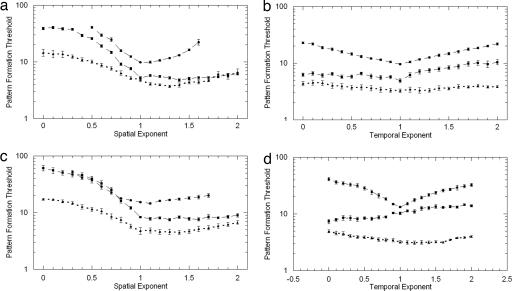Fig. 5.
Effects of 1/f filtered noise on hallucinatory pattern formation. We plot the rms contrast of the spatiotemporal noise needed to induce illusory pattern formation when spatiotemporal noise is viewed through a geometric mask pattern. The independent variable is the exponent (α or β) of the spatial or temporal frequency spectra of the kft−αfs−β noise being varied in each experiment. Three observers' data are shown; each line of data is the average of nine runs (≈9 h of data); error bars are ± 1 SE. (a) Circular mask: detection of illusory fan shapes as a function of spatial spectra (α fixed at 1.0). (b) Circular mask: detection of illusory fan shapes as a function of temporal frequency spectra (β fixed at 1.0). (c) Fan-shaped mask: detection of illusory pulsating rings as a function of spatial frequency (α fixed at 1.0). (d) Fan-shaped mask: detection of illusory rings as a function of temporal spectra (β fixed at 1.0).

